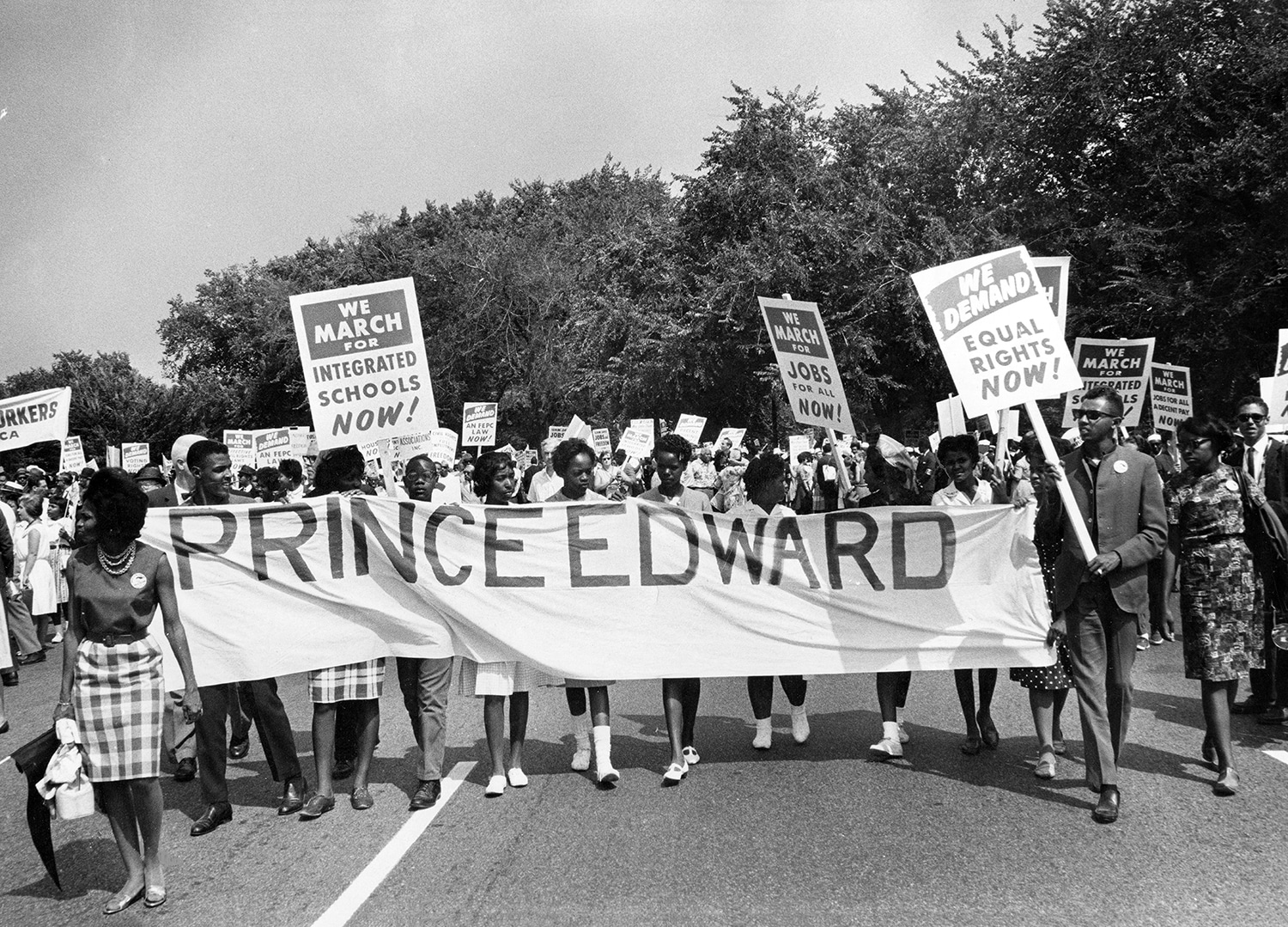RESOURCES
PLACES
March on Washington D.C.
The participation of students from Prince Edward County, Virginia, in the March on Washington for Jobs and Freedom on August 28, 1963, was a powerful and symbolic moment in the history of the Civil Rights Movement. For these students—many of whom had been denied a public education for four years due to the county’s decision to close its schools rather than integrate—the march offered not only an opportunity to protest injustice, but also to claim their rightful place in a national movement demanding equality and dignity.
Organized by local leaders and civil rights advocates like Reverend L. Francis Griffin, Prince Edward students traveled by bus to Washington, D.C., alongside parents, clergy, and activists. For many, this was their first visit to the nation’s capital, and the experience was both awe-inspiring and emotionally charged. Holding signs that read “We Want Education” and “Let Our Children Learn,” the Prince Edward delegation made it clear that their fight was not only about integration, but about access to the most basic civic right: schooling.
At the march, students stood among a crowd of over 250,000 people at the Lincoln Memorial, listening to speeches by civil rights leaders including Dr. Martin Luther King Jr., whose “I Have a Dream” speech underscored the very ideals they had been denied in their own community. Their presence, representing the “Lost Generation” of Prince Edward County, became one of the clearest indictments of Virginia’s Massive Resistance strategy. National press took note of their cause, and civil rights organizers used the Prince Edward crisis to illustrate the need for stronger federal action on civil rights and education.
The impact of attending the March on Washington stayed with these students for a lifetime. It affirmed their struggles, connected them with youth from other regions fighting similar battles, and placed their local crisis within a national story of resistance and hope. Their participation helped maintain public pressure on local and federal officials, contributing to the eventual reopening of Prince Edward County schools in 1964 following the Griffin v. County School Board Supreme Court ruling. For those students, the march was not just a protest—it was an education in justice.
